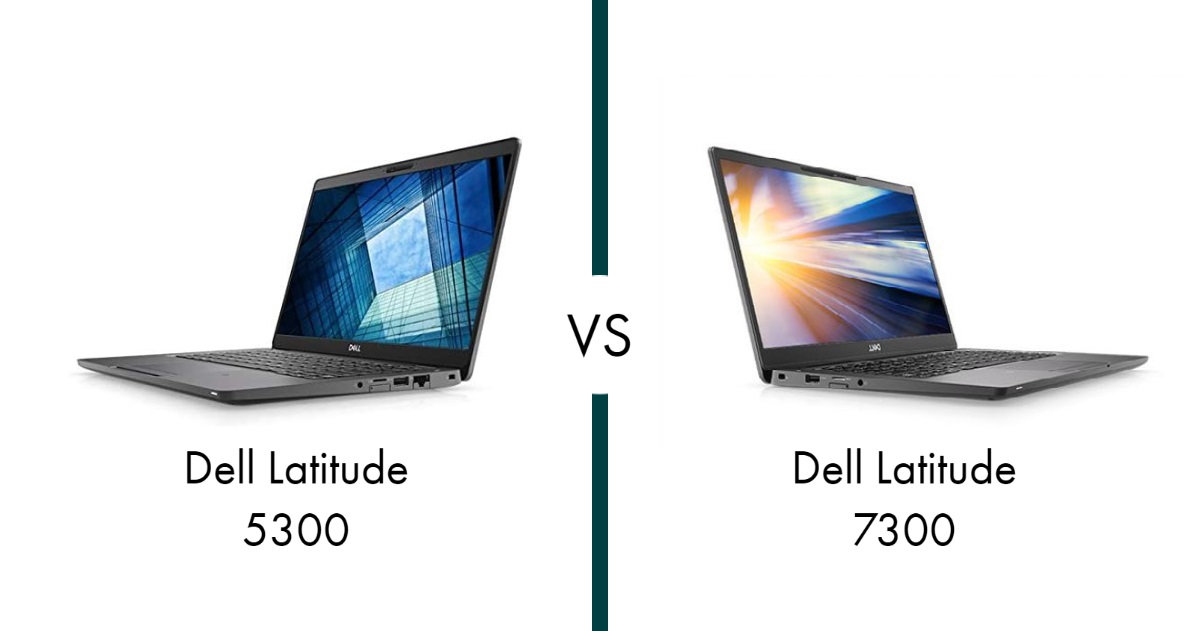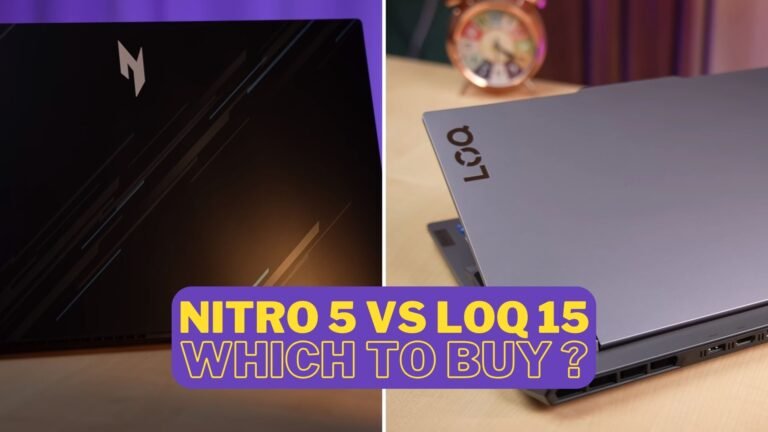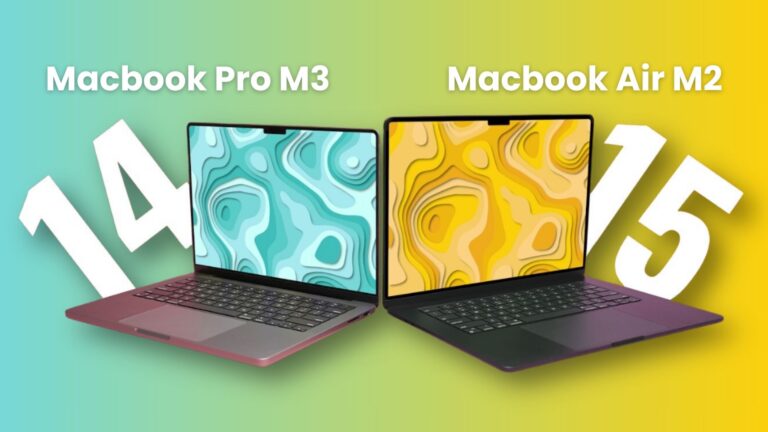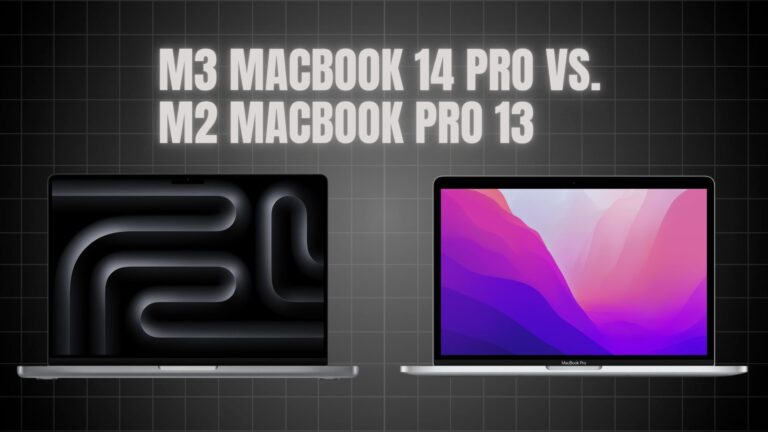In this post, we’re delving into the comparison between the Latitude 5300 and 7300 models. Despite their similarities in hardware and price range, the 7300 is considered to be the more premium offering of the two.
We aim to uncover the distinct features and specifications that set these two laptops apart, providing you with a clear understanding of what makes each model unique.
| Dell Latitude 13 5300 | Dell Latitude 13 7300 |
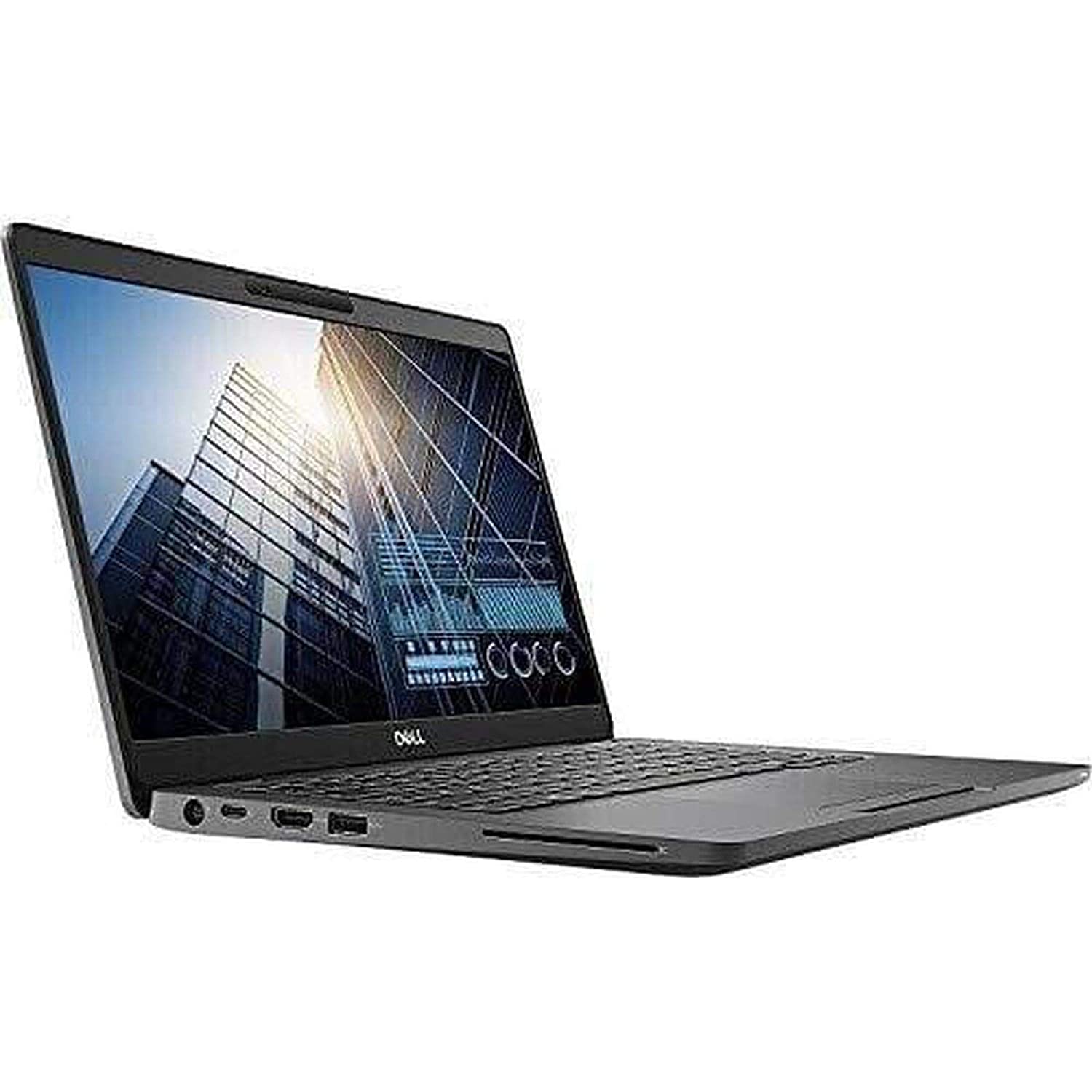 | 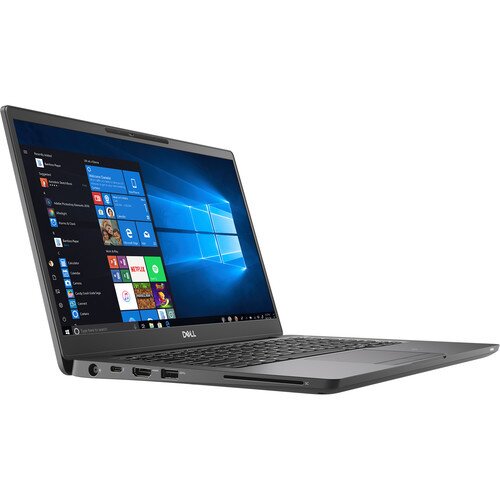 |
| BUY NOW | BUY NOW |
| PROS | PROS |
| Compact, light, and strong body. Lots of security features. | Epic battery life with 60WHr option. Low-watt FHD display looks great. Comfortable keyboard and touchpad. |
| CONS | CONS |
| Tends to get pretty hot and noisy under heavy load. Battery life does not respond to the capacity. | Not the lightest one. Terrible fingerprint reader. |
Specifications
| DISPLAY | DELL LATITUDE 13 5300 | DELL LATITUDE 13 7300 |
| Monitor Features | Laptop, 13.3″ FHD AG, SLP, 6.0mm HD Cam/Mic, WLAN, Carbon Fiber, Non-Touch display, 2-in-1, 13.3″ FHD AR, Anti Smudge, 6.0mm HD Cam/Mic, WLAN, Carbon Fiber, Touch display, Laptop, 13.3″ FHD AR+AS SafeScreen Touch, IR Cam/Mic, ALS, Prox Sensor, WLAN/2×2 WWAN, Carbon Fiber display | 13.4-inch UHD, WLED, Touch Display13.3-in. HD AG (WXGA 1366×768), 220 nits, non-touch display, 13.3-in FHD AG (1920 x 1080), 300 nits, non-touch display 13.3-in. FHD AG (1920 x 1080), 300 nits, non-touch display with Dynamic Privacy Dell SafeScreen, 13.3-in FHD AG (1920 x 1080), 300 nits, touch display13.4-inch UHD, WLED, Touch Display |
| Resolution | 1920 x 1200 | 1920 x 1080, 3840 x 2400 |
| LCD Backlight Technology | LED-Backlit | WLED-Backlit |
| PROCESSOR | DELL LATITUDE 13 5300 | DELL LATITUDE 13 7300 |
| CPU | 8th Gen Intel Core i7-8665U processor, Intel Core i5-8365U Processor, Intel Core i5-8265U processor, Intel Core i3-8145U processor | 8th Generation Intel core i5-8265U, 8th Generation Intel core i5-8365U, 8th Generation Intel core i7-8665U |
| Clock Speed (Turbo boost) | 3.9 GHz, 4.1 GHz, 4.8 GHz | 3.9 GHz, 4.1 GHz, 4.8 GHz |
| Cache | 4MB Cache, 6MB Cache, 8MB Cache | 6M Cache, 8M Cache |
| MEMORY | DELL LATITUDE 13 5300 | DELL LATITUDE 13 7300 |
| Speed | 2666 MHz | 2400 MHz |
| Technology | DDR4 | DDR4 |
| Size | 16GB | 4GB to 32GB |
| HARD DRIVE | DELL LATITUDE 13 5300 | DELL LATITUDE 13 7300 |
| Storage | Up to 1 TB | 128 GB, 256 GB, 1TB |
| Spindle Speed | SATA Solid-State Drive Class 20, PCIe Solid-State Drive Class 35 or 40, SED Solid-State Drive Class 40 | M.2 PCIe Solid State Drive |
| AUDIO & VIDEO | DELL LATITUDE 13 5300 | DELL LATITUDE 13 7300 |
| Graphic Processor | Intel UHD Graphics 620 | Intel UHD Graphics 620 |
| Sound | Realtek ALC3254 with Waves MaxxAudio Pro | Realtek ALC3254 with Waves MaxxAudio Pro, Two-channel high-definition audio |
| Camera | Realtek ALC3254 with Waves MaxxAudio ProStill image: HD resolution (1280 x 720), Video: HD resolution (1280 x 720) at 30 fps | Still image: 0.92 megapixels, Video: 1280 x 720 at 30 fps |
| OPERATING SYSTEM | DELL LATITUDE 13 5300 | DELL LATITUDE 13 7300 |
| Type | Windows 10 Home, Windows 10 Professional | Windows 10 Home (64 bit), Windows 10 Pro (64 bit) |
| CONNECTIONS | DELL LATITUDE 13 5300 | DELL LATITUDE 13 7300 |
| Ports | One micro SIM card slot, One USB 3.1 Gen 1 (Type-A) ports, One USB 3.1 Gen 1 with PowerShare, One USB Type-C 3.1 Gen 2 port with DisplayPort/Thunderbolt 3(optional), Noble wedge lock slot, One headset (headphone and microphone combo) port, One HDMI 1.4b port (supports up to 4k at 30 Hz), RJ-45, 10/100/1000, No LED indicator | One USB Type-C 3.1 Gen 2 port (Thunderbolt), Two USB Type-A 3.1 Gen 1 ports (one PowerShare capable), Noble Wedge lock slot Smart card reader (optional), Dell USB 3.0 Dock (UNO), Universal audio jack (Headset Jack + microphone-in + line-in support), HDMI 1.4a |
| Memory card | uSD 4.0 Memory Card | micro-SD 4.0 memory card |
| COMMUNICATIONS | DELL LATITUDE 13 5300 | DELL LATITUDE 13 7300 |
| Wireless Protocol | Intel Wi-Fi 6 AX210 2×2 802.11ax 160MHz + Bluetooth 5.1 Wireless Card | Intel Wi-Fi 6 AX200 2×2 .11ax 160MHz + Bluetooth 5.0 |
| Wired Protocol | ||
| BATTERY | DELL LATITUDE 13 5300 | DELL LATITUDE 13 7300 |
| Capacity | 42WHr or 60WHr ExpressCharge Capable Battery | 42WHr, 60WHr |
| Cells | 3-Cell or 4-Cell | 3-Cell, 4-Cell |
| DIMENSIONS & WEIGHT | DELL LATITUDE 13 5300 | DELL LATITUDE 13 7300 |
| Width | 12.03 in | 13.07 in |
| Depth | 8.17 in | 8.15 in |
| Height | 0.66-0.76 in | 0.65-0.69 in |
| Weight | 2.73 lbs | 2.75-2.88 lbs |
| MISCELLANEOUS | DELL LATITUDE 13 5300 | DELL LATITUDE 13 7300 |
| Color | ||
| Keyboard | Optional (backlit and Non-backlit) | Optional Backlit Keyboard |
| AVAILABLE OPTIONS | Option-1 Option-2 Option-3 | Option-1 Option-2 Option-3 Option-4 |
Unboxing and Overview
Upon unboxing, both the Latitude 5300 and 7300 models include just the laptop and charger.
Our review units are similarly configured with a Core i7 8655 processor, 8GB of memory, and a 13-inch 1080p display. Notably, the 5300 features additional functionalities such as a touchscreen, IR camera, fingerprint reader, and smart card reader, equipped with an Intel AC9560 Wi-Fi card. In contrast, the 7300 uses a Qualcomm QCA61x4A Wi-Fi card and comes with a 128 GB KIOXIA BG4 SSD, differing from the 5300’s 256 GB Samsung PM991 SSD.
Design and Display
The Latitude 5300 features a plastic casing, contrasting with the Latitude 7300’s all-aluminum body, which not only elevates the sense of quality but may also enhance heat dissipation. While both laptops share similar dimensions, the 5300 is noted to be slightly thicker at the rear, hinting at a difference in design emphasis.
When it comes to display technology, the Latitude 7300 is equipped with an LG 133 WF7 panel, whereas the 5300 utilizes an LG 133 WF6 panel.
Both panels offer a brightness level of 300 nits, but the WF7 panel of the 7300 boasts a higher contrast ratio of 800:1 compared to the 700:1 ratio found in the 5300’s WF6 panel. Furthermore, the WF7 panel provides 72% NTSC color coverage, equivalent to 100% sRGB, surpassing the WF6 panel’s 75% NTSC (or approximately 102% sRGB) color coverage.
This difference in color coverage, although seemingly minimal, along with the presence (or absence) of a touch panel, could account for the noticeable disparity in display quality and viewer experience between the two models.
Upgradeability and Connectivity
Both models offer upgradeable memory slots up to 32 GB and replaceable SSDs and Wi-Fi cards. The 5300 stands out with a built-in ethernet port, enhancing its connectivity options alongside the standard array of ports shared with the 7300, including USB-C, HDMI 1.4, micro SD slot, headphone jack, and two USB 3 ports, one featuring always-on charging.
Comparative Advantages
The 5300 shines with superior webcam quality, more robust speakers, and a brighter screen, ideal for users reliant on wired network connections or superior audio-visual experiences without additional peripherals.
Conversely, the 7300 boasts an aluminum casing (with a carbon-fiber option), a sleeker design, better cooling and performance, a three-year warranty, and improved touchpad buttons, targeting users who prioritize build quality and durability.
Considerations
However, the 5300’s plastic interior and less durable touchpad buttons, alongside a shorter one-year warranty, mark its downsides. The 7300, despite its premium build, falls short with a dimmer display perception, and less impressive speakers and webcam compared to the 5300.
This comparison highlights the nuanced trade-offs between the two models, guiding potential buyers based on their specific needs and preferences in performance, build quality, and functional features.
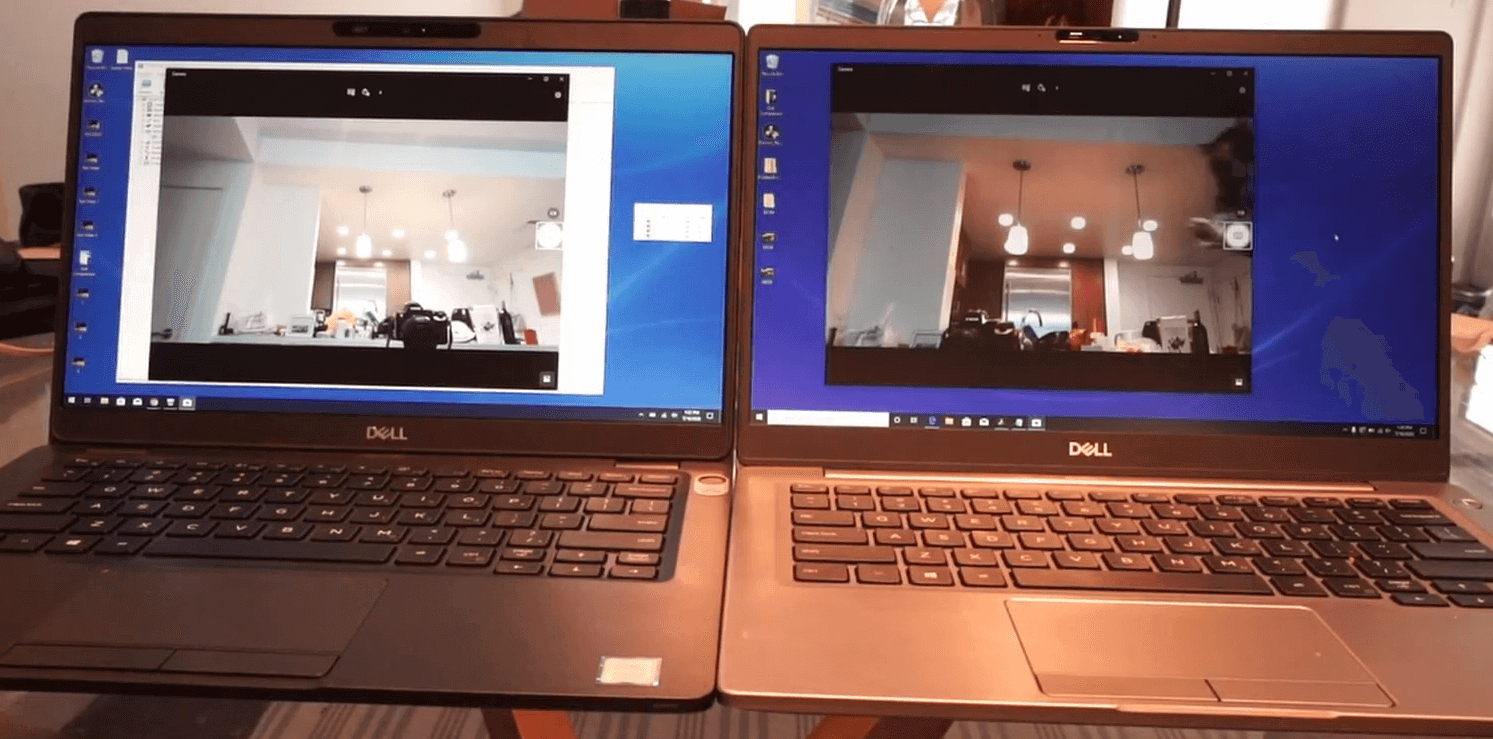
Performance
Thermal Design and Performance Insights
A notable aspect of the Latitude 5300 and 7300 laptops is their thermal design. Despite their similar sizes and overall designs, the 5300 incorporates a unique rear vent at the data hinge, while the 7300 boasts a larger heat sink and heat pipe. This difference in thermal management infrastructure suggests a tailored approach to cooling in each model.
Boot and SSD Performance
In terms of startup speed, the 5300 edges out slightly faster in boot-up times. Benchmark scores further reveal that the SSD in the 5300 performs better than that in the 7300. However, despite identical processors, the 7300 offers superior overall performance, likely attributable to its enhanced heat dissipation capabilities due to the larger heat sink.
GPU and Memory Performance
Both laptops display identical GPU and memory performance, which is expected given their shared specifications in these areas. This parity underscores the impact of thermal design on other performance metrics rather than on GPU and memory capabilities directly.
Video Editing and Thermal Throttling Test
To evaluate real-world performance and thermal efficiency, video re-encoding tasks were performed using Davinci Resolve. The tests highlighted distinct differences in thermal management and performance: the 5300 took approximately 13 minutes to re-encode an 8-minute video at 78 degrees Celsius, while the 7300 completed the task in about 11 minutes at a cooler 74 degrees Celsius. The 7300’s superior cooling system allowed for higher processing speeds during encoding, demonstrating the benefits of its larger heat sink and heat pipe in maintaining lower temperatures and improving efficiency.
File Transfer Speeds
When testing file transfer speeds using the built-in micro SD card readers, both laptops showed comparable performance, with the 5300 achieving 81 megabytes per second and the 7300 slightly ahead at 85 megabytes per second. This similarity suggests that for tasks such as file transfers, the choice between the two models may come down to other factors like thermal management, build quality, and specific use-case requirements.
Battery Life
Opting for the upgraded 60-watt hour battery over the standard 48-watt hour option for both the Latitude 5300 and 7300 has resulted in notable differences in battery performance. The Latitude 5300 stands out with an impressive battery life of approximately 15 hours during web surfing and video playback. This duration not only surpasses its sibling, the Latitude 7300, which delivers around 10 hours under similar conditions but also outperforms competitors such as the Lenovo ThinkPad T490, ThinkPad X1 Yoga, and the Asus ZenBook 13.
The disparity in battery life between the 5300 and 7300, despite utilizing the same capacity batteries, likely stems from differences in their performance characteristics and the additional features offered by each model. The 5300’s extended battery life makes it an excellent choice for users seeking longevity and reliability in their daily computing tasks, standing above both its counterpart and competing models in the market.
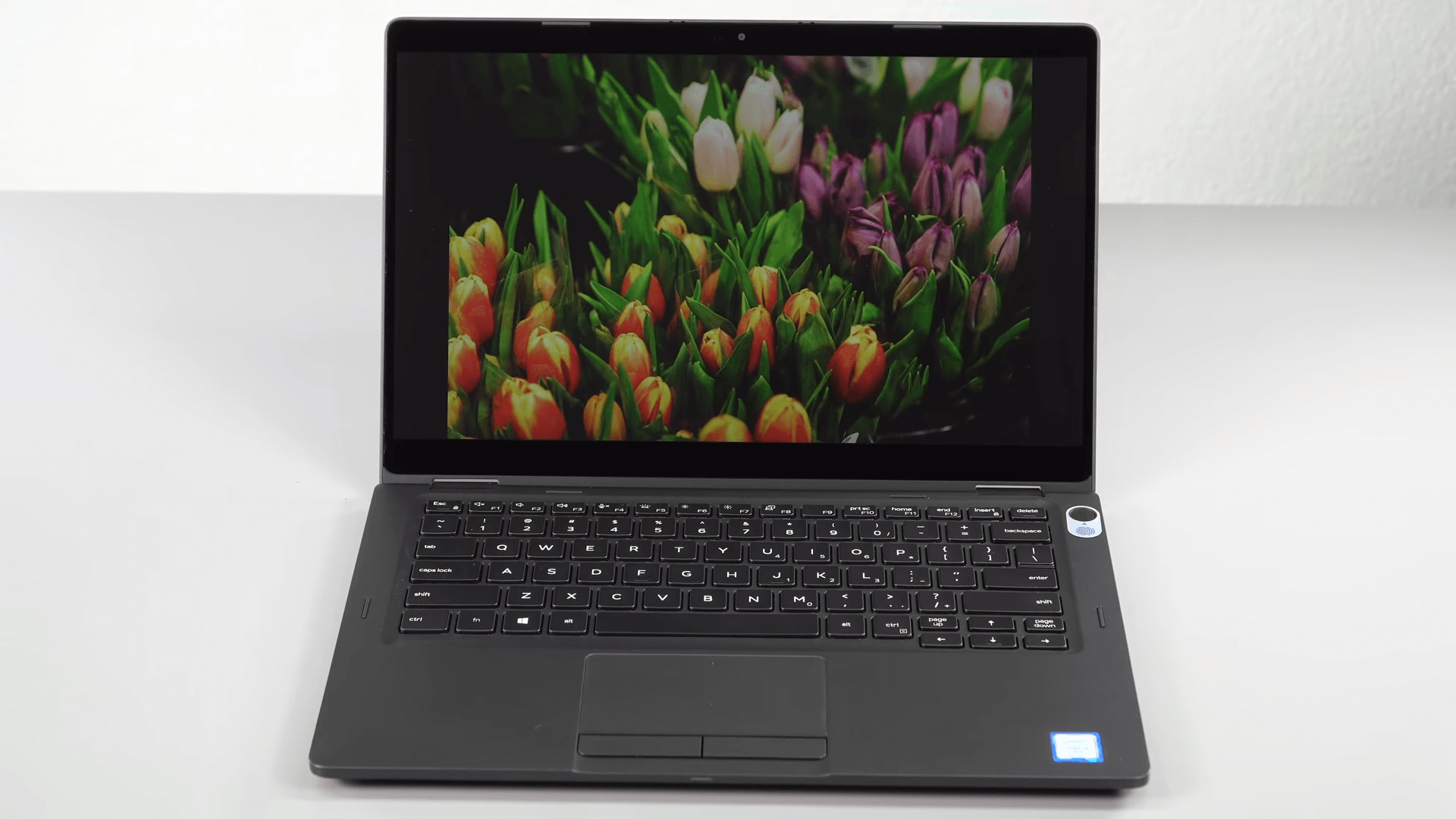
Which One You Should Buy?
Choosing between the Latitude 5300 and the Latitude 7300 ultimately depends on your specific needs and priorities. Here’s a breakdown that might help make the decision clearer:
Dell Latitude 5300
This model shines with its brighter screen, superior speakers, and the convenience of a built-in ethernet jack. These features make it particularly appealing for users who value multimedia performance and connectivity without needing external adapters. The extended battery life of approximately 15 hours is a significant advantage for those who require their device to last through long workdays or extensive travel without frequent recharging. However, it’s important to consider that it comes with a one-year warranty, which might raise concerns about long-term service and support.
Dell Latitude 7300
If build quality, performance, and warranty coverage are your main concerns, the 7300 is the clear winner. The aluminum (or optional carbon-fiber) casing provides a more premium feel and potentially better durability. Its slightly faster performance and better cooling system can be crucial for intensive tasks, ensuring smoother operation under load. The three-year warranty offers peace of mind, ensuring that you’re covered for a longer period should any issues arise. Though it has a dimmer display and less impressive speakers and webcam compared to the 5300, it remains a solid choice for those prioritizing construction and support over multimedia capabilities.
My inclination would lean towards the Latitude 7300, considering my preference for build quality, performance, and the value of a longer warranty period. These factors often translate into a more reliable and satisfying long-term user experience, especially for demanding or professional work environments.
Expert reviews of Dell Latitude 13 5300:
By Pcmag
Given the Dell Latitude 5300‘s price and features, I wouldn’t recommend it. Although PCMag gave it a rating of 3.5 out of 5, it’s far too…By Pcgamebenchmark
Latest pricing, specs and Dell Latitude 5300 13.3″ Notebook gaming laptop review. How many PC games…By Gadgetsnow
Dell Latitude 5300 13.3-inch Laptop–Intel Core i5 8th Gen || 8 GB || 256 GB SSD || No ODD || Windows 10 laptop has a 13.3 Inches (33.78 cm) display…Expert reviews of Dell Latitude 13 7300:
By Notebookcheck.net
Dell redesigned its 13.3-inch Latitude without changing too much. At least on the darker of the two models with its carbon-fiber…By Pcmag
Dell’s 13.3-inch Latitude 7300 is a plain-looking but excellent business ultraportable with a battery-sipping screen, a comfortable…
